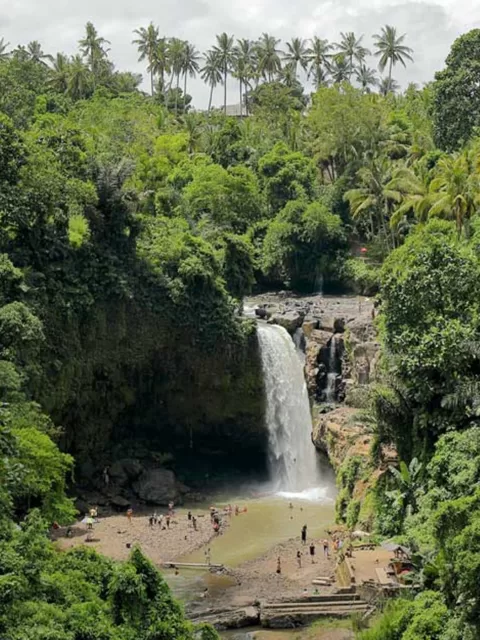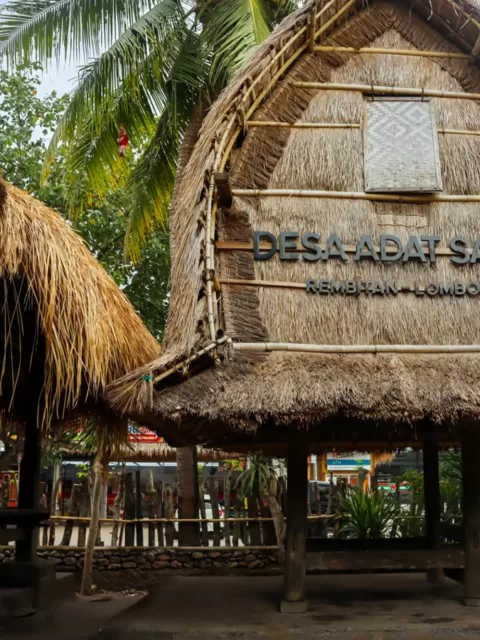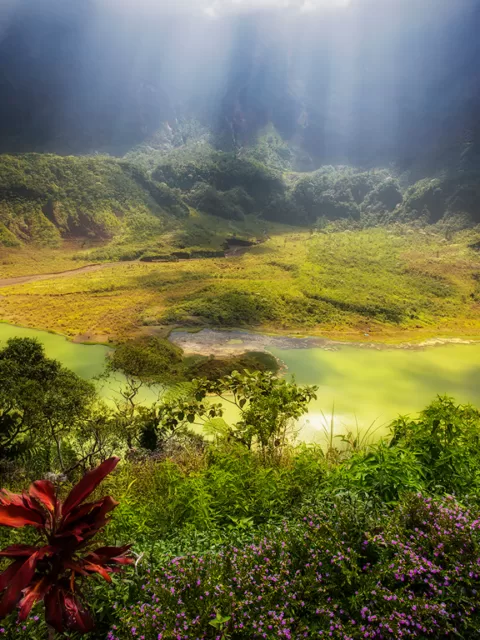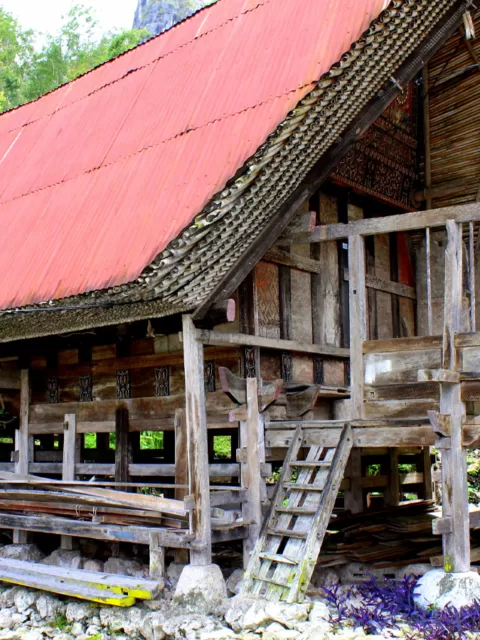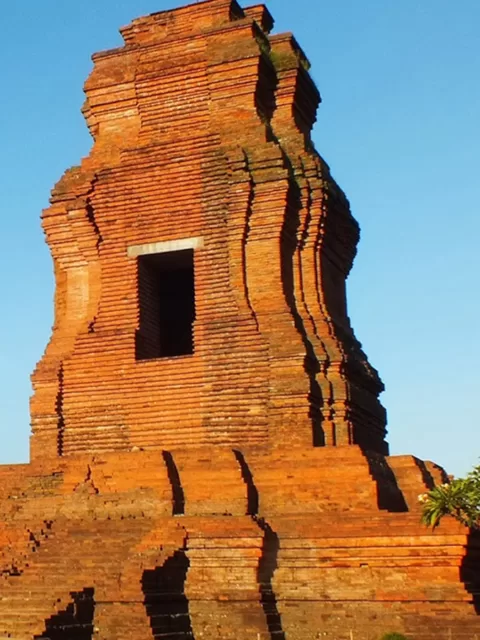Dieng Temples A Bird’s-Eye View of Java’s Ancient Wonders
Introduction
Perched on the lofty Dieng Plateau in Central Java, the Dieng Temples offer a breathtaking bird’s-eye view of the surrounding landscape, a testament to their ancient builders’ vision and ingenuity. These enigmatic temples, dating back to the 7th and 8th centuries AD, are a unique and fascinating reflection of the ancient Javanese civilization, their distinctive architectural features, intricate carvings, and religious significance transporting visitors back in time to a bygone era.
The Dieng Temples played an important role in the religious and cultural life of the ancient Javanese. Dedicated to various Hindu deities, including Shiva, Vishnu, and Brahma, the temples were used for worship, festivals, and other rituals. They were also a center of learning and scholarship, attracting scholars and pilgrims from all over Java and beyond.
Today, the Dieng Temples remain a popular tourist destination, drawing visitors from all over the world to marvel at their architectural beauty and historical significance. The temples’ unique location on the Dieng Plateau, with its cool climate and stunning scenery, only adds to their allure.
Origins and History of Dieng Temples
The Dieng Temples are believed to have been built by the Sanjaya dynasty, the first Hindu kingdom of Java. The exact date of their construction is unknown, but they are estimated to date back to the 7th and 8th centuries AD.
The Dieng Temples were dedicated to various Hindu deities, including Shiva, Vishnu, and Brahma. The temples also played an important role in the religious and cultural life of the ancient Javanese, serving as centers of worship, festivals, and other rituals.
The Dieng Temples were abandoned in the 10th century AD, and they remained hidden from the outside world for centuries. It was not until the 19th century that they were rediscovered by Dutch explorers.

Architectural Marvels of Dieng Temples
The Dieng Temples are renowned for their distinctive architectural style. The temples are made of andesite stone and feature intricate carvings of Hindu deities, animals, and geometric patterns.
One of the most striking features of the Dieng Temples is their towering stepped pyramids. These pyramids are believed to have been used as platforms for religious rituals and ceremonies.
The Dieng Temples are also notable for their unique gateways. These gateways are decorated with ornate carvings and sculptures of Hindu deities.
The architectural style of the Dieng Temples is influenced by Hinduism, but it also incorporates elements of other regional styles, such as those of the Champa and Khmer kingdoms. This unique blend of architectural styles is a testament to the cosmopolitan nature of the ancient Javanese civilization.
Location and Geographical Significance
The Dieng Temples are located in the Dieng Plateau, a high-altitude volcanic plateau in Central Java. The plateau is known for its cool climate and stunning scenery.
The Dieng Temples are perched on a hilltop, offering visitors a bird’s-eye view of the surrounding landscape. The temples overlook the Dieng Plateau, with its volcanic mountains, lakes, and villages.
The location of the Dieng Temples is also significant in terms of their religious significance. The temples are believed to be built on a sacred spot, where the gods are said to have descended to earth.
Read also: Witness the captivating sunrise at Sikunir Hill Dieng
Religious and Cultural Significance of Dieng Temples
The Dieng Temples were dedicated to various Hindu deities, including Shiva, Vishnu, and Brahma. The temples were used for worship, festivals, and other rituals.
The Dieng Temples also played an important role in the cultural life of the ancient Javanese. The temples were a center of learning and scholarship, attracting scholars and pilgrims from all over Java and beyond.
One of the most important festivals associated with the Dieng Temples is the Dieng Culture Festival, which is held annually in August. The festival celebrates the local culture and traditions, and it features a variety of performances, rituals, and ceremonies.
The Art and Sculptures of Dieng Temples
The Dieng Temples are renowned for their intricate carvings and artistry. The temples are decorated with sculptures of Hindu deities, animals, and geometric patterns.
The carvings on the Dieng Temples are believed to tell stories and myths from the Hindu scriptures. The carvings also provide insights into the beliefs and practices of the ancient Javanese.
One of the most famous carvings at the Dieng Temples is the Arjuna Statue, which depicts the Hindu hero Arjuna meditating on a lotus flower. The Arjuna Statue is considered to be one of the finest examples of Hindu sculpture in Java.
Conservation Efforts and Challenges for Dieng Temples
The Dieng Temples are a precious historical treasure that must be preserved for future generations. However, the temples face a number of challenges, including:
- Natural disasters: The Dieng Plateau is located in a volcanically active region. This means that the temples are at risk of damage from earthquakes and volcanic eruptions.
- Climate change: Climate change is also a threat to the Dieng Temples. The increasing frequency and intensity of extreme weather events, such as heavy rains and storms, can damage the temples.
- Human impact: Human activities, such as tourism and development, can also have a negative impact on the Dieng Temples.
There are a number of conservation efforts underway to protect the Dieng Temples. These efforts include:
- Structural reinforcement: The temples are being structurally reinforced to make them more resistant to natural disasters.
- Environmental restoration: The surrounding environment is being restored to reduce the risk of erosion and landslides.
- Sustainable tourism: The government is working to promote sustainable tourism practices that minimize the impact on the temples.
Despite the challenges they face, the Dieng Temples remain a standing testament to the rich cultural heritage of Java. Visitors from all over the world continue to flock to the temples to marvel at their architectural beauty and historical significance.

Tourist Experience at Dieng Temples
Visiting the Dieng Temples is a truly unique and unforgettable experience. The temples are located in a stunning setting, and their intricate carvings and architecture are simply breathtaking.
When visiting the Dieng Temples, visitors should be sure to wear comfortable shoes and clothing. The temples are located on a hilltop, and there is a lot of walking involved. Visitors should also be prepared for the cool temperatures at the Dieng Plateau.
The Dieng Temples are open to the public from 6:00 AM to 6:00 PM daily. There is a small admission fee to enter the temple complex.
Visitors can explore the temples at their own pace or take a guided tour. Guided tours are a great way to learn more about the history and significance of the temples.
There are a number of restaurants and shops located near the Dieng Temples. Visitors can purchase snacks, drinks, and souvenirs at these establishments.
Tips for the Best Viewing Experience
- Arrive early in the morning to avoid the crowds and enjoy the sunrise over the temples.
- Take your time and explore the temples at your own pace. There is a lot to see and appreciate.
- Be sure to check out the Arjuna Statue, one of the finest examples of Hindu sculpture in Java.
- If you are interested in learning more about the history and significance of the temples, take a guided tour.
- Be prepared for the cool temperatures at the Dieng Plateau and dress accordingly.
- Wear comfortable shoes and clothing, as there is a lot of walking involved.
Conclusion
The Dieng Temples are a truly unique and awe-inspiring sight. These ancient Hindu temples, perched on a hilltop in the Dieng Plateau, offer visitors a bird’s-eye view of the surrounding landscape and a glimpse into the rich cultural heritage of Java.
Despite the challenges they face, the Dieng Temples remain a standing testament to the ingenuity and artistry of their ancient builders. Visitors from all over the world continue to flock to the temples to marvel at their beauty and significance.
It is important to preserve these ancient treasures for future generations. We can all do our part by supporting sustainable tourism practices and by educating others about the importance of cultural heritage preservation.





